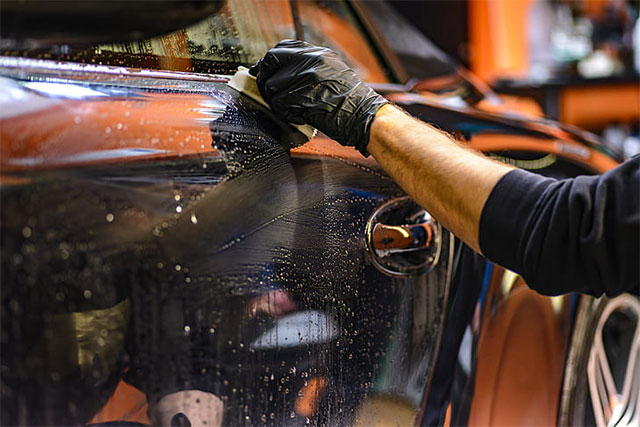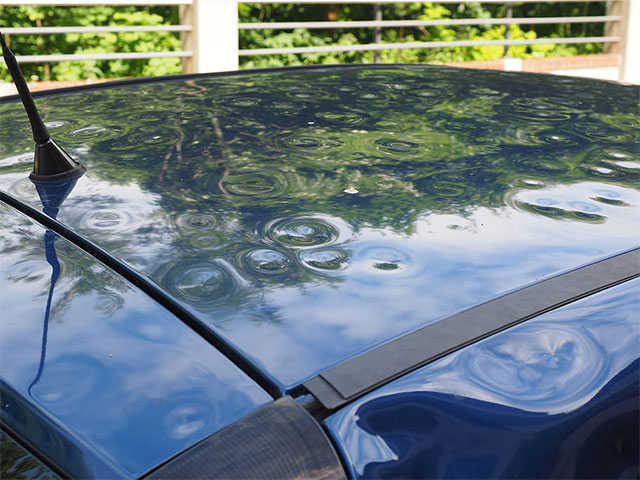It can be a pretty big decision to make. Should I have someone else install my paint protection film (PPF), or do it myself? Both options come with their own pros and cons, but in the end, only you will know what is best for your situation. We’ll go over some of the benefits and drawbacks of each method so that you can decide which way is right for you!
Table of Contents
The Pro’s of Installing Paint Protection Film Yourself

The pros of DIY paint protection film installation are:
- Cost savings. You can save yourself a lot of money by doing the installation yourself, especially if you’re getting a professional to install your PPF in the first place. The cost of labor alone may be enough reason for some people to choose this route!
- Ability to have your PPF done when you want it and at your own convenience. There’s no need to schedule with an installer and wait for them to have availability. Once you’ve bought all your supplies and tools, there’s no reason why anyone should stop you from doing this project whenever they please in their own home or garage (as long as it doesn’t interfere with their neighbors).
- No need for specialized equipment like lifts or jacks because these vehicles aren’t necessary for PPF application; however, having access to at least one jack would still be helpful when removing larger pieces such as fenders or bumpers before installing any additional layers of protection film overtop.
1. Cost Savings
The pros are easy to see:
- You can save money by doing it yourself. Even if you are not a professional, you can try installing paint protection film yourself, so you won’t have to pay anyone for the job. In this case, however, the result will only depend on your skill, so there will be no one to blame if something goes wrong.
- You won’t have to pay for materials or labor. This means that if you’re installing paint protection film on your own vehicle, you won’t have any installation fees–and if you’re installing it for someone else, they’ll save on those costs as well!
2. You Can Have Your PPF Done Whenever You Want
- One of the biggest advantages to doing it yourself is that you don’t need to schedule an appointment with a professional installer. That means no waiting around for them to get around to your car and no waiting in line at their shop, either. You can do it when you want, whether that’s on a weekend or after work during the week.
- No matter what situation you’re in, this flexibility makes DIY PPF installation an appealing option for many people–especially if they have multiple vehicles or other large projects going on at home or work that require attention from time-to-time as well!
3. Take Your Time to Make Sure It Is Perfect
- One of the biggest advantages to doing it yourself is that you can take your time and make sure it is perfect. This will save you money in the long run, as well as prevent any issues with your paint protection film installation.
- If you have never applied paint protection film before, we recommend using a heat gun on low setting to help with the application process. This will make it easier for you to apply the product evenly over large areas (such as hoods), which can be tricky if done incorrectly.
The Contras of Installing PPF Yourself
There are also some risks involved with installing paint protection film yourself. If you don’t do it correctly, the film can come off in pieces or get stuck on the car and then you’ll have to take it back off again (which can be a pain). The worst-case scenario is that you end up ruining the paint on your vehicle from improper removal after the film is down, and then you’ll need an auto body shop to fix it anyway!
1. It Can Be a Messy Process
- The main downside of installing paint protection film is that it can be a messy process, especially if you are doing the job in a not so clean garage or outside.
- If you want to do this yourself, make sure to wear gloves and a mask when handling the film so that you don’t get any paint on it. Also, have plenty of paper towels and wet rags handy for cleaning up excess spray waxes/polishes/etc., because they will drip onto your work area and potentially create an adhesive bond between two pieces of glass that were meant to be separate (and then they won’t come apart).
2. It Can Be Extremely Difficult
- When you’re installing your own film, it’s important to know what you’re doing. This can be extremely difficult for a person without prior experience with paint protection films that stretches. You need to be careful with sharp objects and follow directions carefully so as not to damage your paint job or yourself in the process of installing this product on your vehicle.
- If you’re not sure how to install a paint protection film, there are plenty of videos online that can help you figure it out. The best way to avoid damaging your car is by taking your time and doing the job properly.
3. You Can Damage Your Car Paint
- In addition to the cost of installation, you’ll also have to pay someone to remove the film when it’s time for it to come off. So, you can choose not to do this yourself and instead allow a professional paint protection film installer like ID Protection to handle things for you.
- Moreover, if done improperly, removing paint protection film can damage your car’s finish in some cases. You must take care when removing any type of protection from your vehicle so as not to damage anything else under or near where it was installed.
Conclusion
As you can see, there are pros and cons to both options. If you’re looking for something that will save money and give you more control over when it gets done, then DIY is a great option. However, if you want a professional job done by someone who knows what they are doing then hiring them might be the better choice. Either way, there is no wrong answer here; just make sure whichever route you choose works best for your needs!













